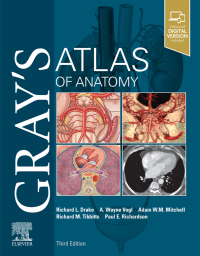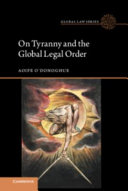Buy Gray’s Atlas of Anatomy E-Book 3rd Edition PDF ebook by author Richard Drake; A. Wayne Vogl; Adam W. M. Mitchell; Richard Tibbitts; Paul Richardson – published by Churchill Livingstone (US) in 2021 and save up to 80% compared to the print version of this textbook. With PDF version of this textbook, not only save you money, you can also highlight, add text, underline add post-it notes, bookmarks to pages, instantly search for the major terms or chapter titles, etc.
You can search our site for other versions of the Gray’s Atlas of Anatomy E-Book 3rd Edition PDF ebook. You can also search for others PDF ebooks from publisher Churchill Livingstone (US), as well as from your favorite authors. We have thousands of online textbooks and course materials (mostly in PDF) that you can download immediately after purchase.
Note: e-textBooks do not come with access codes, CDs/DVDs, workbooks, and other supplemental items.
eBook Details:
Full title: Gray’s Atlas of Anatomy E-Book 3rd Edition
Edition: 3rd
Copyright year: 2021
Publisher: Churchill Livingstone (US)
Author: Richard Drake; A. Wayne Vogl; Adam W. M. Mitchell; Richard Tibbitts; Paul Richardson
ISBN: 9780323636391, 9780702078149
Format: PDF
Description of Gray’s Atlas of Anatomy E-Book 3rd Edition:
Get a multi-dimensional understanding of musculoskeletal anatomy with Anatomy Trains: Myofascial Meridians for Manual Therapists & Movement Professionals, 4th Edition. This hugely successful, one-of-a-kind title continues to center on the application of anatomy trains across a variety of clinical assessment and treatment approaches – demonstrating how painful problems in one area of the body can be linked to a “silent area” away from the problem, and ultimately giving rise to new treatment strategies. This edition has been fully updated with the latest evidence-based research and includes new coverage of anatomy trains in motion using Pilates-evolved movement, anatomy trains in horses and dogs, and the updated fascial compendium on elements, properties, neurology, and origins of the fascial system. It also offers a new, larger library of videos, including animations and webinars with the author. In all, this unique exploration of the role of fascial in healthy movement and postural distortion is an essential read for physical therapists, massage therapists, craniosacral therapists, yoga instructors, osteopathologists, manual therapists, athletic and personal trainers, dance instructors, chiropractors, acupuncturists, and any professional working in the field of movement.Revolutionary approach to the study of human anatomy provides a holistic map of myoanatomy to help improve the outcomes of physical therapies that are traditionally used to manage pain and other musculoskeletal disorders.Relevant theory descriptions are applied to all common types of movement, posture analysis, and physical treatment modalities.Intuitive content organization allows students to reference the concept quickly or gain a more detailed understanding of any given area according to need.Section on myofascial force transmission in gait dynamics is written by guest author James Earls.Robust appendices discuss the relevance of the Anatomy Trains concept to the work of Dr Louis Schultz (Meridians of Latitude), Ida Rolf (Structural Integration), and correspondences with acupuncture meridians.New photos and images of fascial tissues, adhesions, and layers provide a better understanding of text content.Revised and expanded content reflects the most up-to-date research and latest evidence for the scientific basis of common clinical findings.New, larger library of videos includes animations and webinars with the author.New Anatomy Trains in Motion section by guest author Karin Gurtner uses Pilates-evolved movement to explore strength and plasticity along myofascial meridians.New addition: Anatomy Trains in Quadrupeds (horses and dogs) is mapped for equine and pet therapies by Rikke Schultz, DVM, Tove Due, DVM, and Vibeke Elbrønd, DVM, PhD.New appendix: Updated fascial compendium on elements, properties, neurology, and origins of the fascial system.NEW! enhanced eBook version is included with print purchase, which allows students to access all of the text, figures, and references from the book on a variety of devices.





